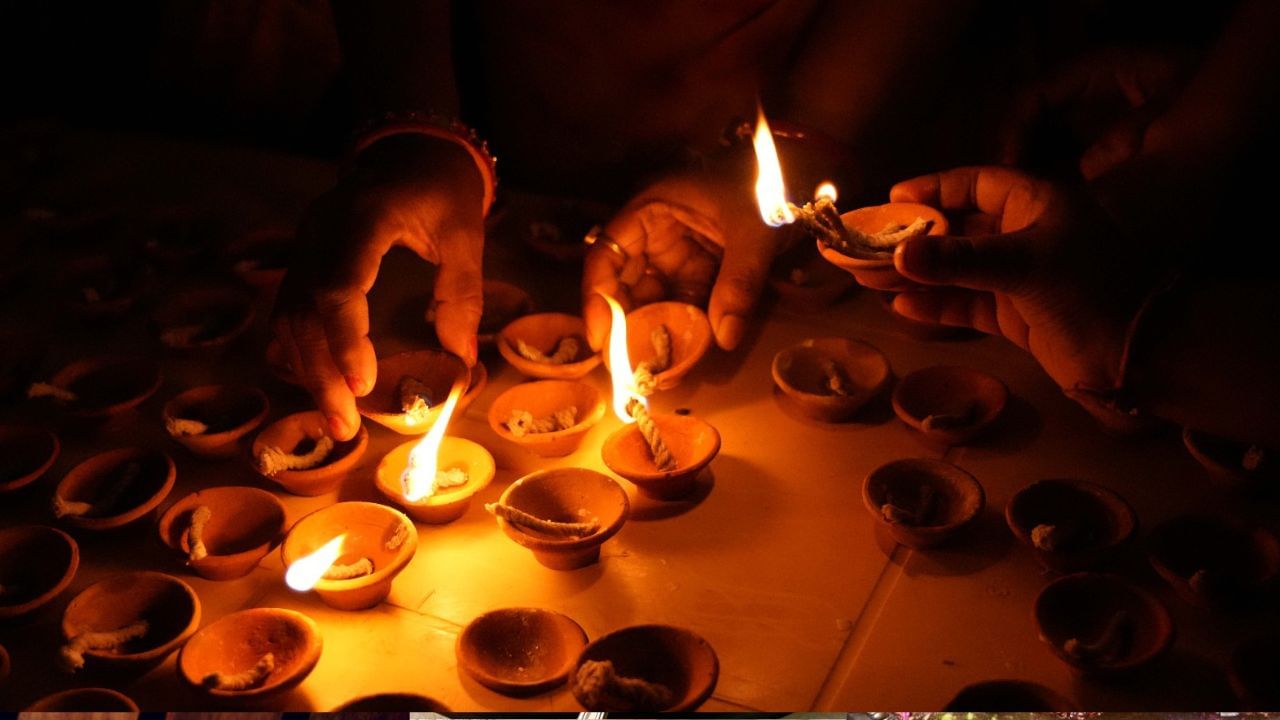New Delhi: Kartik Deepotsav, or the “Festival of Lights” during the auspicious month of Kartik, is a sacred observance in the Vaishnava tradition. It celebrates the deeply spiritual practices and unique glories of Kartik (also known as Damodara) month, which falls on the lunar calendar between October and November.
Kartik is revered as a particularly blessed time, especially for those devoted to Lord Krishna, since the activities and worship conducted during this period are said to bring multiplied spiritual benefits. Here are some key aspects shared by representatives of Vrindavan Heritage Tower and practices associated with Kartik Deepotsav that are followed here in Vrindavan to attain spiritual fulfilment.
Significance of Kartik Month
Kartik month is often considered the most spiritually potent of all months in the Vedic calendar. In the Padma Purana, Lord Vishnu declares that the Kartik month is dear to Him, and all pious deeds during this time yield eternal spiritual merits. Kartik is also significant for its association with Krishna’s Damodara-lila (pastime of being bound by ropes), which emphasises the intimate loving relationship between the Lord and His devotees.
The hallmark of Kartik Deepotsav is the offering of ghee lamps, which devotees light in homes and temples to honour Lord Krishna. This act symbolises the dispelling of ignorance and darkness from one’s life and invokes divine blessings. Each evening, devotees sing the Damodarastakam prayers and offer a ghee lamp to Krishna, expressing love and devotion for His Damodara form.
In Sanskrit, dāma means “ropes,” and udara means “the abdomen; hence Lord Krishna was called Damodara. The Skanda Purana praises this act, explaining that the benefit of lighting a single lamp during Kartik is immeasurable, bringing liberation from material life and gaining the priceless blessings of Lord Krishna.
Observance of Vrata during Kartik Purnima
Devotees often take up specific vows (vratas) during Kartik, such as increased chanting of the Hare Krishna Mahamantra, reading from sacred texts (often Srimad-Bhagavatam or the Bhagavad-gita), fasting or following dietary restrictions, and reducing worldly activities to focus on spiritual practices. These austerities are particularly potent in Kartik and are believed to purify one’s consciousness, allowing for deeper spiritual realisation.
Rituals of Damodara-lila
Kartik Deepotsav commemorates the famous Damodara-lila, where young Krishna was bound by Mother Yashoda’s love and determination. Though Krishna is the Supreme, He allowed Himself to be bound by the ropes of His mother’s affection, symbolising that only pure love and devotion can attract God’s attention. This lila is cherished among devotees as it reveals the intimate relationship between Krishna and His devotees, especially emphasising bhakti (devotion) over all other forms of worship.
Many devotees undertake pilgrimages to Vrindavan and other sacred places connected to Krishna’s pastimes. In Vrindavan, particularly at the temples of Radha-Damodara, Banke Bihari, and Radha-Raman, grand celebrations with lamp offerings, kirtans (devotional singing), and readings from sacred texts take place daily. The culmination of the month-long Kartik observance is often marked with Govardhan Puja and the celebration of Annakut, honouring Krishna’s Govardhan-lila.
Kartik Deepotsav is a time to intensify one’s connection with Lord Krishna and deepen one’s devotion, through activities as mentioned in the Vedic scriptures. Devotees consider this a special festival, as the observances of Kartik give an opportunity for one to gain immense spiritual credit and devotion easily, which is otherwise difficult to attain.
